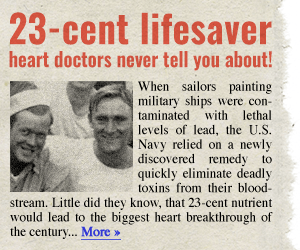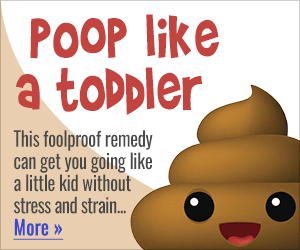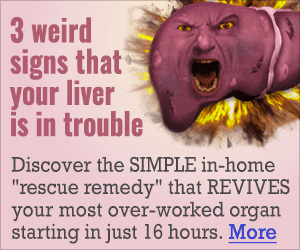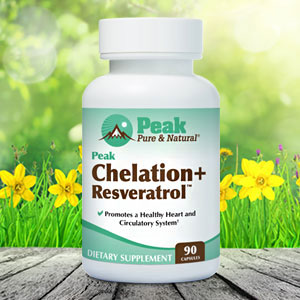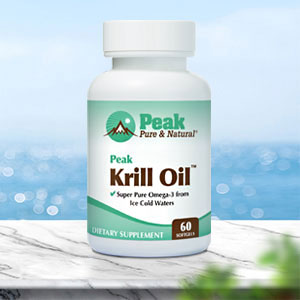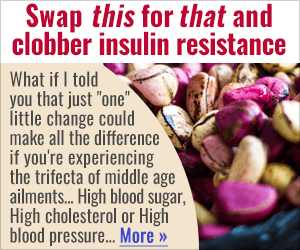Get Easy Health Digest™ in your inbox and don’t miss a thing when you subscribe today. Plus, get the free bonus report, Mother Nature’s Tips, Tricks and Remedies for Cholesterol, Blood Pressure & Blood Sugar as my way of saying welcome to the community!
When fish isn’t good for your heart

Update: This article was written in 2018, but mercury contamination in fish continues to be a persistent problem. However, the degree of exposure to mercury depends on both the amount and the type of fish eaten.
Many of us remember being sick as a child, and having our temperature taken with a mercury thermometer.
I recall being fascinated by the dark, lustrous metal that lived inside that thermometer.
My mother didn’t know that it was poisonous — but now, we know better.
Unfortunately, a food normally associated with heart health is now a carrier of dangerous mercury, and poses a significant threat…
How mercury destroys the heart
A 2017 study in the International Journal of Environmental Research and Public Health reviewed numerous research reports detailing mercury’s specific cardiovascular effects. The findings include:
- Mercury has a direct effect on the mitochondria of heart tissue cells, and induces changes in mitochondrial function
- Mercury exposure is correlated with increased risk of malfunctions that lead to stroke and heart attack
- Mercury stimulates the production of prostaglandins, which promote unnecessary inflammation.
“The most dangerous of all the heavy metals”
The EPA sets the ‘acceptable’ daily intake of mercury at 0.01 micrograms. This may come to us in the form of breathing mercury vapors, drinking contaminated water, or eating fish contaminated with mercury.
But even this small level of mercury intake can have devastating effects on our heart.
Dr. Mark Houston, Vanderbilt University professor and hypertension expert, has studied the ways in which mercury attacks our blood vessels, heart, and brain. He has identified eight problem areas, further broken down into 22 specific effects on our cardiovascular system.
These include:
- Increases free radicals and oxidative stress – Mercury exposure stops glutathione from working, leaving us unprotected from oxidative stress and chronic inflammation.
- Disrupts mitochondrial function – Our heart muscle depends on our mitochondria for the energy it needs to keep beating. When mitochondria are weakened, so is your heart.
- Destroys endothelial cells – These cells line all of our blood vessels. They facilitate blood flow, form new capillaries, and produce nitric oxide, which regulates blood pressure.
- Makes platelets sticky – When blood platelets stick together, they form clots that block arteries, causing stroke.
- Increases “bad” fats – Mercury deactivates the enzyme paraoxonase, which fights HDL in the blood and prevents atherosclerosis, stroke, and heart attack.
How to reduce your mercury exposure
Research published in 2007 by the Norwegian Dental Biomaterials Adverse Reaction Unit identified two main sources of mercury exposure for the general public: exposure from contaminated seafood and mercury vapor from amalgam fillings, which the study concluded increases mercury concentrations in the brain.
How can you cut down on your exposure?
First of all be choosy about fish…
To start with, certain fish are more likely to be contaminated with mercury than others. Both the FDA and EPA publish reports that compare concentrations of mercury in a wide range of fish and shellfish.
The EPA also publishes a National Listing of Fish Advisories with contact information for your state where you can get more specific information and advice about the safety of eating local fish.
The most mercury-laden fish are albacore tuna, swordfish, bluefish, king mackerel, orange roughy, shark, marlin, and ahi tuna. In general, smaller fish like sardines and herring are safer.
Other types of fish also have mercury, but the percentage falls within EPA guidelines for the maximum amount allowable. Your best bet is to limit your intake to once or twice a week.
Consider seeing a holistic dentist…
Holistic dentists perform the same dental services as you’re used to, but with an extra emphasis on whole body (holistic) health. They clean and fill cavities, but these biological or integrative dentists are set apart because they try to minimize their patients’ exposure to harmful chemicals — like mercury.
Holistic dentists use fillings and composites made of resin, plastic and other materials that they believe are safer than amalgam fillings.
If able, consider having your old mercury fillings replaced.
What about the mercury circulating in your body now?
Chances are high you’ve been exposed to mercury over the course of your lifetime.
In addition to what we’ve already talked about, mercury is found in some cosmetics and well water. So, how do we get rid of what’s already in our bodies?
Here are four ways to minimize the effects of mercury exposure already in your body.
Chelation. EDTA chelation is a safe, natural way to remove heavy metals from the body. It is a natural heart therapy with a proven track record.
Milk thistle. Silymarin, the active ingredient in this herb, is known for its cleansing effect on the liver and gall bladder. It can help your body heal from mercury poisoning.
Fiber. Getting enough fiber in your diet will help keep you regular, and help rid your body of mercury though the elimination process. A faster elimination time keeps toxins from sitting in your bowels too long where they can be absorbed into your cells.
Use probiotics. A 2012 study showed that Lactobacillus can bind to and remove some heavy metals. In fact, probiotics may be the silver bullet solution to your daily toxin exposure. You can take a Lactobacillus supplement or eat fermented foods like yogurt and kefir.
Supplement with PQQ and CoQ10. These nutrients can help protect, and possibly help your brain repair neurological damage.
Editor’s note: Do you know that poor gums and teeth are linked to the number one killer in America? Not to mention kidney disease… rheumatoid arthritis… Parkinson’s disease… depression… and so much more. Click here to discover America’s Hidden Dental Health Crisis: How to protect yourself and your family from this dangerous public health peril!
Sources:
- Cardiovascular Disease — World Mercury Project
- Does Methylmercury-Induced Hypercholesterolemia Play a Causal Role in Its Neurotoxicity and Cardiovascular Disease? — Toxicological Sciences
- Role of Mercury Toxicity in Hypertension, Cardiovascular Disease, and Stroke — The Journal of Clinical Hypertension
- The Role of Mercury in Cardiovascular Disease — Journal of Cardiovascular Diseases & Diagnosis
- The role of mercury and cadmium heavy metals in vascular disease, hypertension, coronary heart disease, and myocardial infarction — Alternative Therapies In Health And Medicine
- How to reduce your mercury exposure from seafood — Consumer Reports



